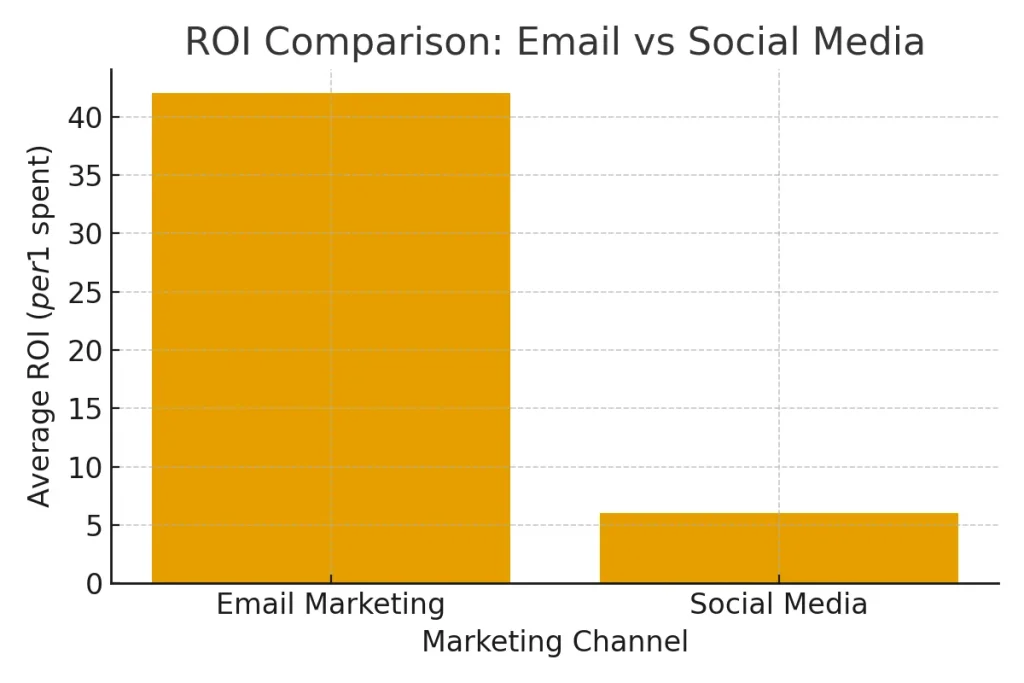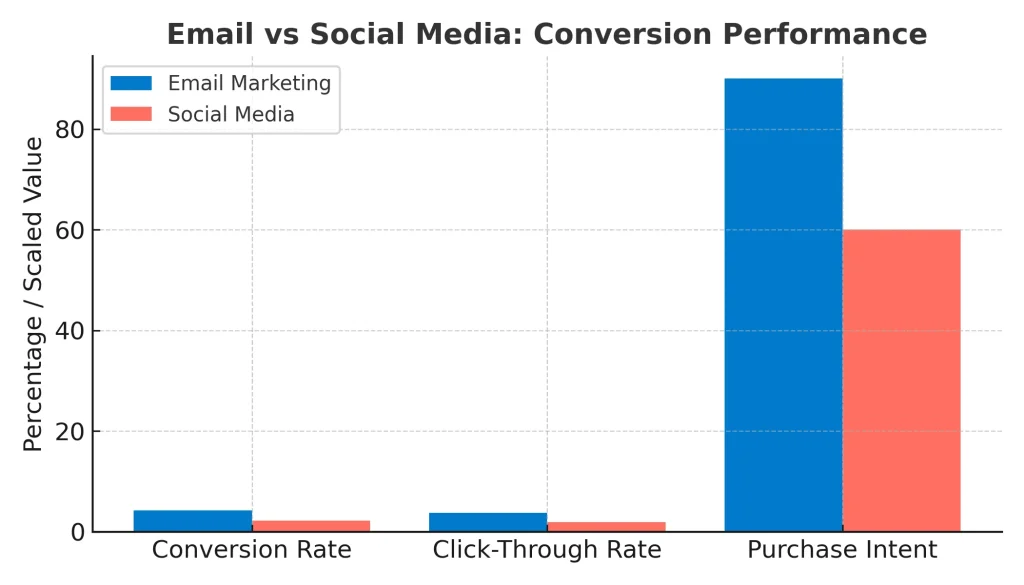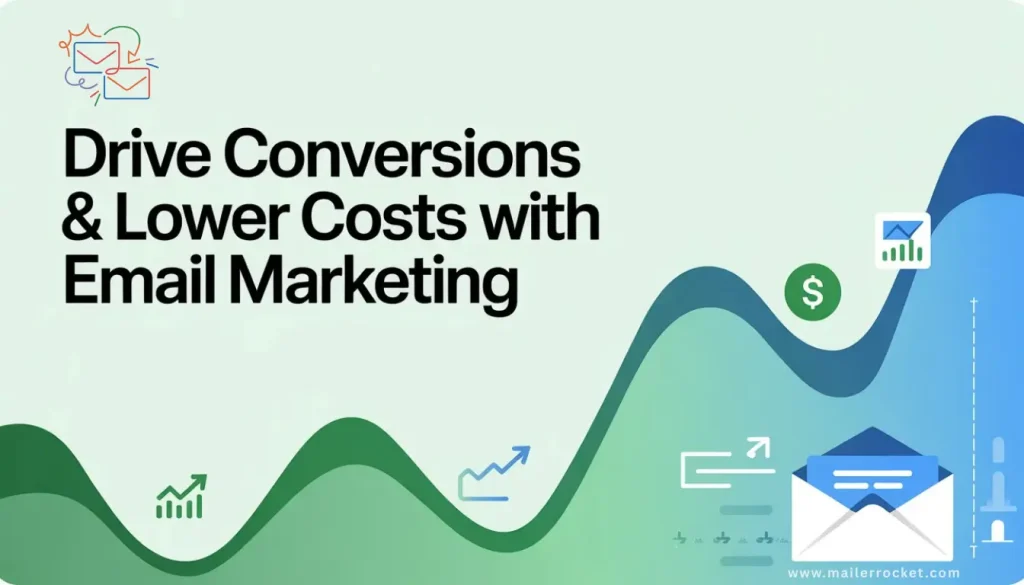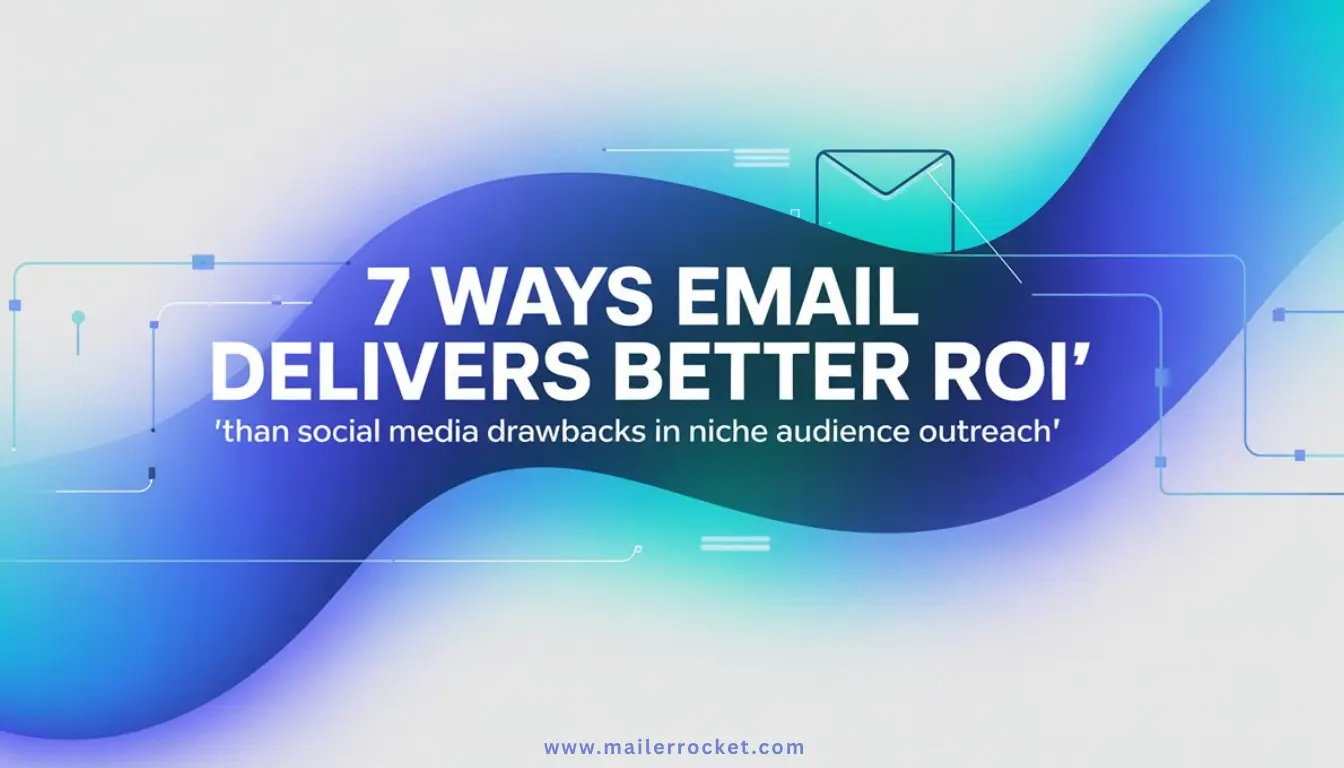Reaching a niche audience effectively is crucial for businesses aiming to maximize their marketing efforts. In the digital landscape, two prominent channels have emerged: email marketing and social media. While both have their advantages, a closer examination reveals that email ROI comparison often yields more favorable results, especially when targeting specific audience segments.
The ability to tailor messages and offers to a niche audience is a significant benefit of email marketing. By leveraging email ROI comparison, businesses can better understand the effectiveness of their campaigns and make data-driven decisions to optimize their strategies.
Key Takeaways
- Understanding the importance of email ROI comparison in niche audience outreach.
- Recognizing the benefits of targeted marketing efforts.
- Leveraging data to optimize marketing strategies.
- Comparing the effectiveness of email marketing and social media.
- Identifying the advantages of tailored messaging in niche audience outreach.
Maximize ROI with Email Marketing for Niche Audiences
Unlock the full potential of your marketing campaigns by targeting niche segments with tailored email strategies
The Current Marketing Landscape: Email vs. Social Media
The digital marketing landscape is constantly evolving, with email and social media emerging as key players. As businesses navigate this complex environment, they are faced with the challenge of allocating their marketing budgets effectively.
The Evolution of Digital Marketing Channels
The shift from traditional to digital marketing has been significant. Digital channels have become the preferred method for reaching target audiences.
From Traditional to Digital: The Shifting Paradigm
The marketing landscape has undergone a significant transformation, with digital channels becoming increasingly prominent. This shift has been driven by changes in consumer behavior and advancements in technology.
The Rise of Email and Social Media as Marketing Powerhouses
Email and social media have emerged as critical components of modern marketing strategies. Both channels offer unique benefits, including targeted reach and measurable ROI.
Why Businesses Are Reconsidering Their Marketing Mix
Businesses are continually assessing their marketing strategies to optimize performance. Key considerations include budget allocation and ROI analysis.
Budget Allocation Challenges in Modern Marketing
Allocating marketing budgets effectively is a significant challenge. Businesses must weigh the benefits of different channels, including email and social media.
The Quest for Higher ROI in Specialized Markets
In niche markets, achieving a higher ROI is crucial. Businesses are turning to email marketing strategies to maximize their returns, given the social media drawbacks such as algorithm changes and content saturation.

Understanding Email ROI Comparison Metrics
Understanding the metrics behind email ROI is essential for businesses looking to optimize their marketing strategies. Email ROI comparison is not just about numbers; it’s about understanding the effectiveness of your email marketing campaigns in driving revenue and customer engagement.
Key Performance Indicators for Email Marketing
Email marketing metrics are crucial for evaluating the success of your campaigns. These metrics provide insights into how your audience interacts with your emails.
Open Rates, Click-Through Rates, and Conversion Metrics
Open rates indicate the percentage of recipients who opened your email, while click-through rates measure the percentage of recipients who clicked on a link within your email. Conversion metrics, on the other hand, track the number of recipients who completed a desired action, such as making a purchase.
Engagement and Retention Measurements
Engagement metrics, including open rates and click-through rates, help gauge the level of interest in your content. Retention measurements, such as unsubscribe rates and spam complaints, are vital for understanding how well you’re maintaining your email list.
| Metric | Description | Importance |
|---|---|---|
| Open Rate | Percentage of recipients who opened the email | High |
| Click-Through Rate | Percentage of recipients who clicked on a link | High |
| Conversion Rate | Percentage of recipients who completed a desired action | Very High |
How to Calculate True Email Marketing ROI
Calculating the true ROI of email marketing involves more than just looking at revenue generated from campaigns. It requires a comprehensive approach that considers various factors, including costs and long-term value.
Direct Revenue Attribution Methods
Direct revenue attribution involves tracking the revenue generated directly from email campaigns. This can be done through unique promo codes, affiliate links, or tracking pixels.
“The key to successful email marketing is not just in the metrics, but in how you use those metrics to inform your strategy.”
Long-term Value Assessment Frameworks
Assessing the long-term value of email marketing involves considering factors such as customer lifetime value (CLV) and the impact of email on customer retention.
By understanding and applying these metrics, businesses can gain a clearer picture of their email marketing ROI and make more informed decisions about their marketing strategies.
Common Social Media Drawbacks for Niche Markets
The effectiveness of social media marketing for niche audiences is hampered by several inherent drawbacks. As businesses continue to navigate the complex digital landscape, understanding these limitations is crucial for developing effective marketing strategies.
Algorithm Changes and Organic Reach Limitations
Social media platforms are constantly evolving, with algorithm changes significantly impacting organic reach. This creates challenges for businesses trying to maintain visibility without substantial advertising budgets.
The Declining Visibility Problem
As algorithms prioritize content from friends and family over business pages, niche businesses often experience a decline in organic visibility, making it harder to reach their target audience.
Pay-to-Play Realities for Businesses
The shift towards a pay-to-play model on many social media platforms means that businesses must allocate significant budgets to reach their niche audiences effectively.
Content Saturation and Attention Span Challenges
Niche businesses face the challenge of standing out in a crowded content landscape. With users bombarded by information, capturing and maintaining attention is increasingly difficult.
Competition for User Attention
The intense competition for user attention on social media platforms makes it challenging for niche businesses to differentiate their content and attract their target audience.
Content Fatigue Among Target Audiences
Repeated exposure to similar content can lead to fatigue among target audiences, reducing engagement and making it harder for businesses to achieve their marketing goals.
Platform-Specific Audience Demographics
Different social media platforms have unique user demographics, which may not always align with the target audience for niche businesses.
Misalignment Between Platform Users and Niche Markets
When the user base of a social media platform doesn’t match the demographics of a niche market, businesses may struggle to effectively target their audience.
Demographic Limitations for Specialized Products
Businesses offering specialized products or services may find that their target audience is not well-represented on certain social media platforms, limiting their marketing effectiveness.
Way 1: Direct Ownership of Audience Relationships
One of the primary advantages of email marketing lies in its ability to establish direct ownership of audience relationships. This direct connection enables businesses to engage their audience more effectively.
Email Lists as Owned Marketing Assets
Email lists are considered valuable marketing assets because they represent a direct line to potential and existing customers. By building an email list, businesses can communicate with their audience without relying on third-party platforms.
Building Proprietary Audience Databases
Creating a proprietary audience database involves collecting email addresses from willing participants. This process helps in establishing a loyal customer base.
Value Appreciation of Quality Email Lists
A high-quality email list appreciates in value over time as it allows for more targeted and effective marketing campaigns. The value of an email list is directly tied to its ability to facilitate targeted audience engagement.
Independence from Third-Party Platform Policies
Having direct ownership of audience relationships through email marketing provides independence from third-party platform policies. This independence is crucial for maintaining consistent communication with the audience.
Avoiding Social Media Algorithm Updates
By owning the email list, businesses can avoid the pitfalls of social media algorithm updates that often reduce the visibility of their content. Email marketing allows for a more stable form of communication.
Control Over Communication Frequency and Content
With email marketing, businesses have complete control over the frequency and content of their communications. This control enables more effective targeted audience engagement strategies.
| Marketing Channel | Ownership | Control Over Content |
|---|---|---|
| Email Marketing | Direct Ownership | High Control |
| Social Media | No Direct Ownership | Limited Control |
In conclusion, direct ownership of audience relationships through email marketing offers significant advantages, including independence from third-party platforms and control over communication strategies. This leads to more effective targeted audience engagement.
Way 2: Superior Targeting and Segmentation Capabilities
Superior targeting and segmentation capabilities make email marketing a potent tool for reaching niche markets. By allowing marketers to divide their audience into specific groups based on various criteria, email marketing enables highly targeted campaigns that resonate with the intended audience.
Compare the performance and ROI of email marketing with social media for niche audience outreach
Behavioral Segmentation in Email Campaigns
Behavioral segmentation is a powerful strategy in email marketing, enabling businesses to tailor their messages based on the actions and behaviors of their subscribers.
Purchase History-Based Targeting
By analyzing the purchase history of their subscribers, marketers can send targeted campaigns promoting related products or offering personalized discounts.
Engagement-Level Segmentation Strategies
Segmenting the audience based on their engagement level allows marketers to re-engage inactive subscribers with special offers or win-back campaigns, while rewarding highly engaged subscribers with exclusive content.
Personalization Opportunities Beyond Social Media Capabilities
Email marketing offers extensive personalization opportunities that go beyond the capabilities of social media platforms.
Dynamic Content Customization
Dynamic content customization allows marketers to display different content to different segments of their audience within the same email campaign, enhancing the relevance and impact of the message.
Lifecycle-Based Messaging Approaches
By tailoring messages according to the subscriber’s position in the customer lifecycle, businesses can provide timely and relevant information, nurturing leads through the sales funnel.
| Segmentation Strategy | Description | Benefit |
|---|---|---|
| Purchase History-Based | Targeting based on past purchases | Increased relevance and potential for repeat business |
| Engagement-Level | Segmenting based on subscriber engagement | Improved re-engagement and subscriber retention |
| Dynamic Content | Customizing content for different segments | Enhanced personalization and campaign effectiveness |
“The key to successful email marketing lies in understanding your audience and tailoring your messages accordingly. Segmentation and personalization are crucial elements in achieving this.”
Way 3: Higher Conversion Rates and Purchase Intent
When it comes to driving conversions and purchase intent, email marketing stands out as a superior channel compared to social media. The targeted nature of email campaigns allows businesses to reach customers who are more likely to convert.
Email’s Role in the Customer Journey
Email marketing plays a crucial role in nurturing leads through the customer journey. By strategically crafting email sequences, businesses can guide potential customers toward making a purchase.
Nurturing Leads Through Strategic Email Sequences
Strategic email sequences help in building a relationship with potential customers, increasing the likelihood of conversion. These sequences are designed to provide value and relevance to the recipient.
Decision-Stage Communication Effectiveness
Effective decision-stage communication through email can significantly impact purchase intent. By providing timely and relevant information, businesses can nudge customers toward making a decision.
Comparative Conversion Metrics Analysis
A comparative analysis of conversion metrics between email and social media reveals the superiority of email marketing. The table below highlights some key differences:
| Metric | Email Marketing | Social Media |
|---|---|---|
| Conversion Rate | 4.29% | 2.22% |
| Click-through Rate | 3.75% | 1.91% |
| Purchase Intent | High | Moderate |

Industry-Specific Performance Benchmarks
Industry-specific benchmarks show that email marketing outperforms social media across various sectors. For instance, in e-commerce, email marketing conversion rates can be up to 3 times higher than those of social media campaigns.
“Email marketing is not just about sending emails; it’s about creating a dialogue with your customers.”
This dialogue is crucial for building trust and driving conversions.
In conclusion, email marketing’s ability to drive higher conversion rates and purchase intent makes it a valuable channel for businesses. By understanding its role in the customer journey and leveraging comparative conversion metrics, businesses can optimize their marketing strategies.
Way 4: Cost-Effectiveness for Niche Audience Outreach
Email marketing stands out for its cost-effectiveness in targeting niche audiences. This advantage is crucial for businesses operating with limited marketing budgets.
When allocating resources, businesses must consider the return on investment (ROI) from their marketing efforts. Email marketing offers a higher ROI compared to social media, particularly for niche audiences.
Email Marketing Budget Allocation Strategies
Effective email marketing begins with strategic budget allocation. This involves deciding how to distribute resources across different aspects of email marketing.
Platform and Tool Investment Considerations
Investing in the right email marketing platforms and tools is crucial. These investments enable businesses to manage their email lists, create engaging content, and automate campaigns.
Content Creation and Management Resources
Content is a key component of email marketing. Allocating sufficient resources for content creation and management ensures that emails are engaging and relevant to the target audience.
Social Media Ad Spend vs. Email Campaign Costs
Comparing the costs of social media advertising to email campaigns reveals significant differences. Social media platforms often require higher ad spend to reach niche audiences effectively.

Rising Customer Acquisition Costs on Social Platforms
The cost of acquiring customers through social media is increasing. This rise is due to algorithm changes and increased competition for ad space.
Long-term Cost Efficiency Comparison
When comparing long-term costs, email marketing proves more efficient. The cost per email sent remains relatively stable, unlike social media ad costs, which can fluctuate.
| Marketing Channel | Initial Cost | Long-term Cost | ROI |
|---|---|---|---|
| Email Marketing | Low | Stable | High |
| Social Media Ads | High | Increasing | Variable |
Way 5: Enhanced Analytics and Performance Tracking
Enhanced analytics and performance tracking represent a crucial advantage of email marketing over social media for niche audiences. This capability allows marketers to gauge the effectiveness of their campaigns with precision.
Email Marketing Metrics That Matter for Niche Audiences
Email marketing provides several key metrics that are crucial for understanding campaign performance among niche audiences.
Deliverability and Engagement Tracking
Deliverability metrics, such as open rates and click-through rates, offer insights into how well an email campaign is performing. High engagement rates often correlate with successful niche audience targeting.
Revenue Attribution Models for Email
Revenue attribution models help marketers understand the direct impact of email campaigns on sales and revenue. This is particularly valuable for niche markets where attribution can be challenging.
Limitations in Social Media Analytics for Niche Markets
While social media platforms provide analytics tools, they have limitations, especially for niche markets.
Challenges in Cross-Platform Performance Measurement
Measuring performance across different social media platforms can be complex due to varying metrics and attribution models. This complexity can obscure the true picture of campaign effectiveness.
Data Privacy Restrictions Affecting Analytics
Data privacy regulations have impacted the availability of detailed user data on social media, further complicating analytics for niche audiences.
| Metric | Email Marketing | Social Media |
|---|---|---|
| Deliverability Tracking | Highly granular | Limited by platform |
| Revenue Attribution | Direct and measurable | Often indirect |
“The ability to track and measure the effectiveness of marketing campaigns is crucial for optimizing strategies and improving ROI.”
By leveraging the advanced analytics capabilities of email marketing, businesses can make data-driven decisions to enhance their niche audience reach and overall campaign performance.
Way 6: Longevity and Sustainability of Email Strategies
Email strategies offer a sustainable advantage in the digital marketing ecosystem due to their historical stability and adaptability. This section explores the endurance of email marketing and contrasts it with the volatility of social media platforms.
Drive Higher Conversions with Targeted Email Campaigns
Boost your conversion rates and see greater results with strategic email marketing for niche markets.
Email’s Endurance in the Marketing Ecosystem
Email has remained a vital marketing channel due to its ability to evolve with consumer behaviors and technological advancements.
Historical Stability of Email as a Channel
Email has been a cornerstone of digital communication since its inception, providing a stable platform for marketers to reach their audiences. Its reliability is a significant advantage over more volatile channels.
Adaptability to Changing Consumer Behaviors
The adaptability of email marketing allows businesses to adjust their strategies according to changing consumer preferences, ensuring continued relevance and effectiveness.
Social Media Platform Volatility and Market Shifts
Social media platforms, on the other hand, are subject to rapid changes in user engagement, algorithm updates, and market trends, making them less reliable for long-term marketing strategies.
The Rise and Fall of Social Networks
History has shown that social media platforms can rise to prominence quickly but also face significant declines in user engagement and popularity.
Risk Mitigation Through Channel Diversification
Diversifying marketing channels, including a strong emphasis on email, can mitigate the risks associated with the volatility of social media platforms.
| Marketing Channel | Longevity | Adaptability |
|---|---|---|
| Email Marketing | High | High |
| Social Media | Low | Medium |
The table above illustrates the comparative longevity and adaptability of email marketing versus social media, highlighting the former’s sustainability.
Way 7: Integration Capabilities with Other Marketing Channels
The seventh way email outperforms social media is through its integration capabilities with other marketing channels, creating a cohesive marketing ecosystem. This integration enables businesses to leverage email as a central component of their omnichannel marketing strategy, enhancing targeted audience engagement.
Email as a Central Hub for Omnichannel Marketing
Email marketing’s versatility allows it to serve as a pivotal element in omnichannel marketing, connecting various customer touchpoints. By integrating email with other channels, businesses can create a unified customer experience.
Connecting Online and Offline Customer Experiences
Email campaigns can be designed to bridge online and offline interactions, providing a seamless customer journey. For instance, an email campaign can promote in-store events or offer exclusive discounts for online purchases.
CRM Integration Benefits for Customer Insights
Integrating email marketing with CRM systems provides valuable customer insights, enabling businesses to refine their audience profiling strategies. This integration allows for more personalized and effective email campaigns.
Synergistic Effects of Combined Email and Social Strategies
Combining email and social media strategies can create synergistic effects, enhancing overall marketing performance. By leveraging both channels, businesses can maximize their reach and engagement.
Using Social Media for List Building
Social media platforms can be used to drive email list growth by promoting sign-up incentives and exclusive content. This approach helps expand the email list while maintaining engagement on social channels.
Email Content Amplification Through Social Channels
Email content can be amplified through social media channels, extending its reach beyond the email list. Sharing email content on social platforms can drive additional traffic and engagement.
Implementing Effective Email Marketing for Niche Audience Engagement
Niche audience engagement through email marketing requires a tailored approach that resonates with specific customer segments. To achieve this, businesses must focus on building quality email lists, crafting relevant content, and continuously optimizing their campaigns.
Building and Maintaining Quality Email Lists
Creating a robust email list is foundational to successful email marketing. This involves employing ethical list growth tactics to ensure that subscribers are genuinely interested in your content.
Ethical List Growth Tactics
Businesses should use opt-in forms on their websites, offer valuable content in exchange for email addresses, and leverage social media to encourage sign-ups. These methods help build a list of engaged subscribers.
List Hygiene and Management Best Practices
Regularly cleaning your email list by removing inactive subscribers and using segmentation to personalize content can significantly improve engagement rates. This practice helps maintain a healthy list and reduces the risk of being marked as spam.
Content Strategies That Resonate with Niche Audiences
Developing content that speaks directly to your niche audience is crucial. This involves creating value-driven content that addresses their specific needs and interests.
Value-Driven Content Development
Focus on producing high-quality, relevant content that provides solutions or insights valuable to your audience. This could include industry news, how-to guides, or exclusive offers tailored to their preferences.
Subject Line and Preview Text Optimization
Crafting compelling subject lines and preview text is essential for improving open rates. Use personalization, urgency, and curiosity to encourage subscribers to open your emails.
Testing and Optimization Frameworks
Continuous improvement is key to successful email marketing. Implementing A/B testing methodologies for various email components can help identify what works best for your audience.
A/B Testing Methodologies for Email Components
Test different elements such as subject lines, email copy, calls-to-action, and sending times to determine the most effective combinations. This data-driven approach allows for informed decisions that enhance campaign performance.
Continuous Improvement Cycles for Campaign Performance
Regularly review campaign metrics to identify areas for improvement. Use this data to refine your strategies, ensuring that your email marketing efforts remain effective and engaging over time.
Conclusion
In today’s competitive digital landscape, businesses are continually seeking effective ways to reach and engage their niche audiences. The comparison between email ROI and social media marketing reveals a compelling case for the former. By leveraging email marketing, businesses can establish direct, owned relationships with their audience, enjoy superior targeting capabilities, and achieve higher conversion rates.
The analysis of email ROI comparison metrics and social media drawbacks highlights the cost-effectiveness, enhanced analytics, and longevity of email marketing strategies. As businesses navigate the complexities of digital marketing, focusing on email as a central hub for omnichannel marketing can yield significant benefits. By integrating email with other marketing channels, companies can create a robust and sustainable marketing ecosystem.
Ultimately, the data supports the notion that email marketing remains a vital component of a successful niche audience outreach strategy. By understanding and leveraging the strengths of email ROI comparison, businesses can optimize their marketing efforts and drive meaningful engagement with their target audience.


